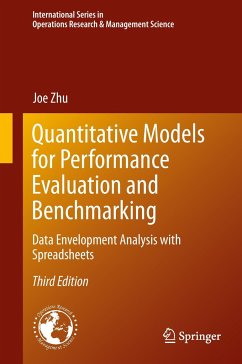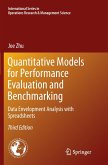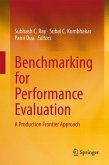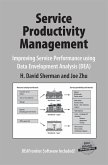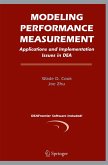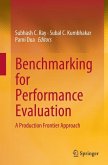The author is one of the prominent researchers in the field of Data Envelopment Analysis (DEA), a powerful data analysis tool that can be used in performance evaluation and benchmarking. This book is based upon the author's years of research and teaching experiences.
It is difficult to evaluate an organization's performance when multiple performance metrics are present. The difficulties are further enhanced when the relationships among the performance metrics are complex and involve unknown tradeoffs. This book introduces Data Envelopment Analysis (DEA) as a multiple-measure performance evaluation and benchmarking tool. The focus of performance evaluation and benchmarking is shifted from characterizing performance in terms of single measures to evaluating performance as a multidimensional systems perspective.
Conventional and new DEA approaches are presented and discussed using Excel spreadsheets - one of the most effective ways to analyze and evaluate decision alternatives. The user can easily develop and customize new DEA models based upon these spreadsheets.
DEA models and approaches are presented to deal with performance evaluation problems in a variety of contexts. For example, a context-dependent DEA measures the relative attractiveness of similar operations/processes/products. Sensitivity analysis techniques can be easily applied, and used to identify critical performance measures. Two-stage network efficiency models can be utilized to study performance of supply chain. DEA benchmarking models extend DEA's ability in performance evaluation. Various cross efficiency approaches are presented to provide peer evaluation scores.
This book also provides an easy-to-use DEA software - DEAFrontier. This DEAFrontier is an Add-In for Microsoft® Excel and provides a custom menu of DEA approaches. This version of DEAFrontier is for use with Excel 97-2013 under Windows and can solve up to 50 DMUs, subject tothe capacity of Excel Solver. It is an extremely powerful tool that can assist decision-makers in benchmarking and analyzing complex operational performance issues in manufacturing organizations as well as evaluating processes in banking, retail, franchising, health care, public services and many other industries.
It is difficult to evaluate an organization's performance when multiple performance metrics are present. The difficulties are further enhanced when the relationships among the performance metrics are complex and involve unknown tradeoffs. This book introduces Data Envelopment Analysis (DEA) as a multiple-measure performance evaluation and benchmarking tool. The focus of performance evaluation and benchmarking is shifted from characterizing performance in terms of single measures to evaluating performance as a multidimensional systems perspective.
Conventional and new DEA approaches are presented and discussed using Excel spreadsheets - one of the most effective ways to analyze and evaluate decision alternatives. The user can easily develop and customize new DEA models based upon these spreadsheets.
DEA models and approaches are presented to deal with performance evaluation problems in a variety of contexts. For example, a context-dependent DEA measures the relative attractiveness of similar operations/processes/products. Sensitivity analysis techniques can be easily applied, and used to identify critical performance measures. Two-stage network efficiency models can be utilized to study performance of supply chain. DEA benchmarking models extend DEA's ability in performance evaluation. Various cross efficiency approaches are presented to provide peer evaluation scores.
This book also provides an easy-to-use DEA software - DEAFrontier. This DEAFrontier is an Add-In for Microsoft® Excel and provides a custom menu of DEA approaches. This version of DEAFrontier is for use with Excel 97-2013 under Windows and can solve up to 50 DMUs, subject tothe capacity of Excel Solver. It is an extremely powerful tool that can assist decision-makers in benchmarking and analyzing complex operational performance issues in manufacturing organizations as well as evaluating processes in banking, retail, franchising, health care, public services and many other industries.

